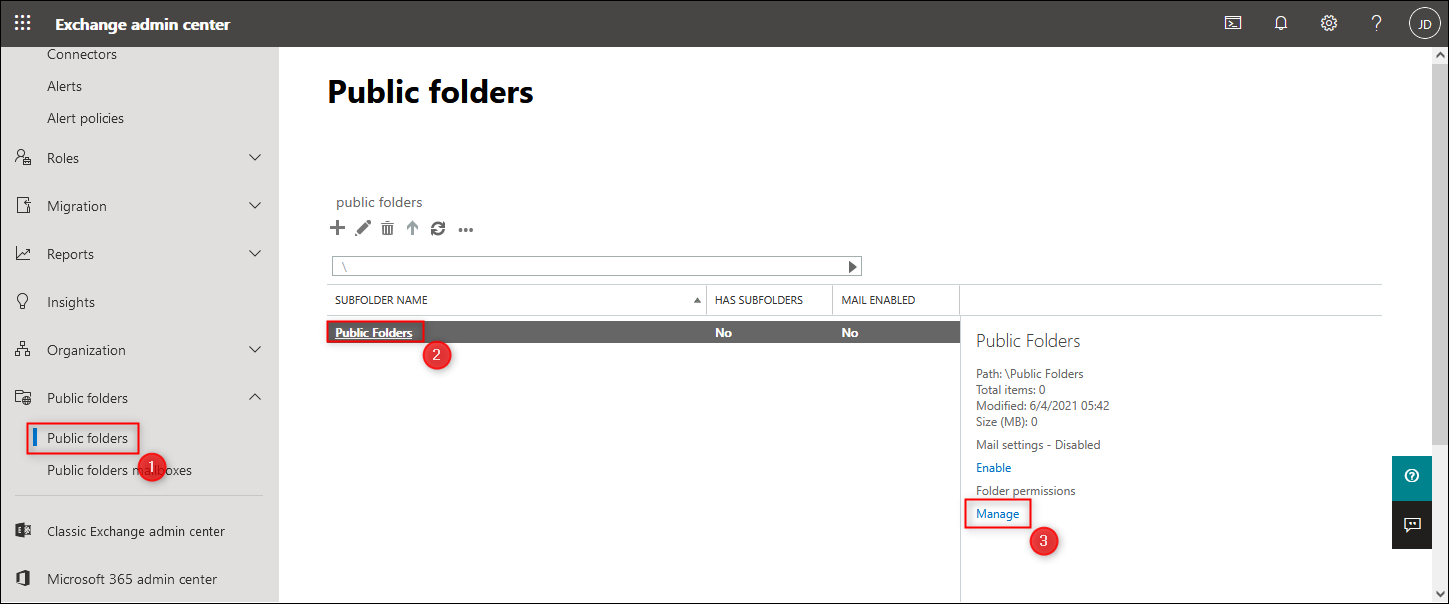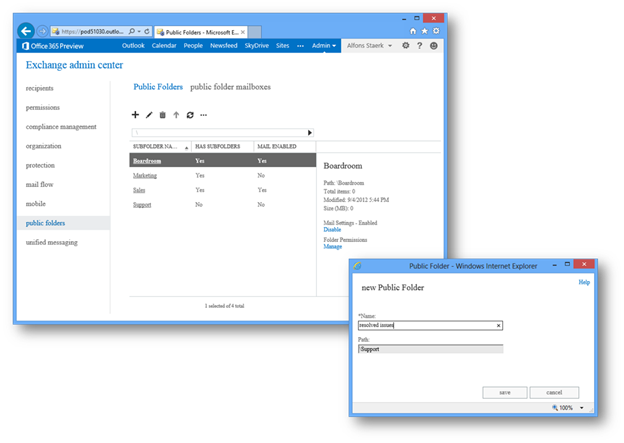

If you launch the Exchange Admin Center (EAC) and scroll down the left-hand pane, you can click on “public folders.” So how does the creation process work in Exchange 2013 or later versions? In this example, we are looking at an Exchange 2019 Server. This was brilliant news! Why? Because the mailbox was now part of the database in Exchange that is part of a DAG and offers you high availability, so when you are performing maintenance and failover on your database availability group, the public folders will stay online. When Microsoft released Exchange 2013, one of the major changes was that public folders were now not a database anymore but just a mailbox in Exchange.

This can be done from the Exchange Management Console or the Exchange Management Shell.

Now that you have created your database, you need to move on to create your public folders. Once that is complete, you can click “Next” and after you have reviewed the configuration summary you can then click on “New.” When it has finished then you can click “Finish.”
R1soft exchange public folder license#
Essentially, it was just another database you had to manage on Exchange and if you had a standard license you were limited to five databases. In legacy versions, Exchange 2010 as an example, you would create a public folder database that would be stored on one server with no high availability and your public folders would live there. Over a number of years, the way Microsoft has handled them has changed.
R1soft exchange public folder Offline#
Search, Recover, & Extract Mailboxes, Folders, & Email Items from Offline Exchange Mailbox and Public Folder EDB's and Live Exchange Servers or Import/Migrate direct from Offline EDB to Any Production Exchange Server, even cross version i.e.Public folders in Exchange have been around for a very long time. Search, Recover, & Extract Mailboxes, Folders, & Email Items from Offline Exchange Mailbox and Public Folder EDB's and Live Exchange Servers or Import/Migrate direct from Offline EDB to Any Production Exchange Server, even cross version i.e. All the others are questionable to scary once you start to examine the data. Of these 3 firms since they all do a great job from the standpoint of accuracy and completeness of recovering your data. If you value your data then I would only work with one NOTE: There are many 3rd party tools on the market, however there are really only 3 worthwhile IMO which are the tools from Kroll, Dell/Quest and Lucid8 whom I work for. We make a tool called DigiScope that can easily accomplish this and more for you. Use a 3rd party product to open an offline copy of the source Public Folder EDB and migrate/restore it to a production Public Folder EDB on an alternate Exchange server. You could export all online public folder data to PST and then import those PST's into a new public folder EDBĢ. There are really only a few options available since database portability doesn't apply to public folder databases.ġ.


 0 kommentar(er)
0 kommentar(er)
